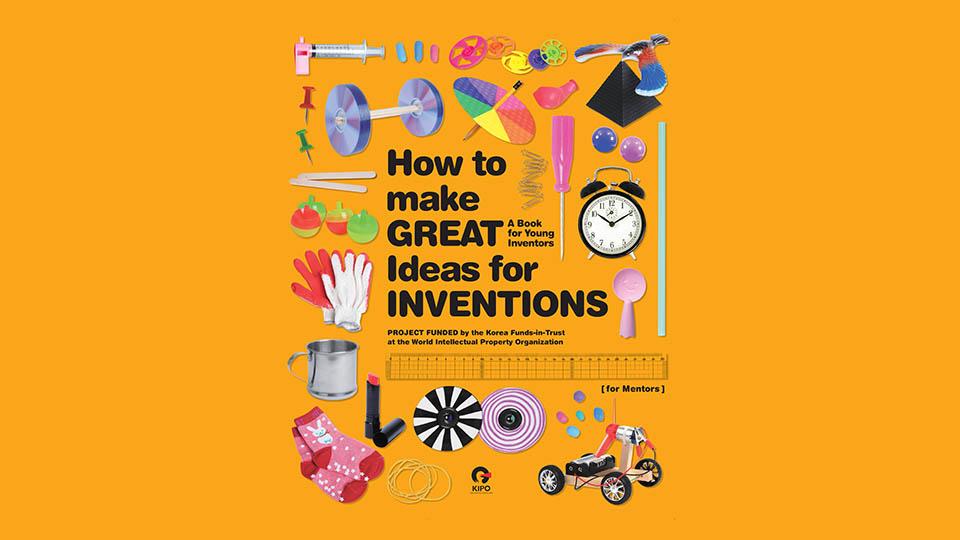FIT-Korea: Funds at Work
IP Basics for Start-ups and SMEs
Learn how IP can help start-ups and scale-ups achieve business success

Pororo animation videos on intellectual property (IP)
WIPO has produced five educational episodes of Pororo in collaboration with the Korean Intellectual Property Office (KIPO) and the Korea Invention Promotion Association (KIPA) and funded by FIT/Korea IP. These episodes give children a basic understanding of intellectual property rights, teach them to respect the ideas of others, and show them ways of coming up with their own ideas.
Throughout the series, Pororo and his friends embark on exciting challenges to invent a new sled while learning practical lessons along the way. Children will learn about the invention process, design, trademarks, and many other concepts relevant to Intellectual Property (IP).


"Great Ideas"

"The Invention Contest"
Pororo and friends enter the jet-engine sled in an invention contest, and learn about the basic conditions that must be satisfied before an invention can qualify for legal protection.

"Pororo Makes His Mark"

"A New Sled Design"

"Fake Sled Chaos"
Workbook and guidebook for ‘Pororo’ animation videos: “Getting Creative with Pororo”


Pororo workbook
- Textbook: episode 1 [PDF], episode 2 [PDF] , episode 3 [PDF]
- Sticker 1 [PDF], Sticker 2 [PDF], Sticker 3 [PDF]
- Popup kit 1 [PDF], Popup kit 2 [PDF], Popup kit 3 [PDF]

Pororo guidebook
The Pororo Guidebook serves as an instructive reference for educators, detailing methods on how to effectively use the first three episodes as teaching tools for children.

Invention note
National Invention and Creativity Education (NICE) Program
The NICE Program targets teachers and students to build intellectual property (IP) literacy in schools by placing an emphasis on invention, innovation and creativity education. The Program also engages government officials involved in curricula setting and IP, and educators to promote awareness of invention and IP, as well as development of problem-solving abilities, among teachers and students.
How does the program work?

- An in-person training course for teachers and policymakers in Korea;
- An in-person training of teachers workshop in the participating country;
- Support for the development of a business plan to implement education on invention and IP for students at elementary and secondary schools;
- Holding invention competitions;
- Mentorship with the advisory experts from the Republic of Korea; and
- Support for a national roving seminar to raise awareness of students and teachers on invention and IP.
Appropriate Technology Competition
The competition fosters creativity and innovative thinking in problem-solving and offers a platform for skill and knowledge development in technology, engineering, and entrepreneurship. With a diverse pool of participants, the competition promotes collaboration and cross-sectoral partnerships.
WIPO's partnership with national Intellectual Property (IP) offices and the Korean Intellectual Property Office (KIPO), funded by FIT/Korea IP, makes these competitions possible. In 2009, KIPO proposed the idea of "utilizing patent information in the transfer of AT" at the 3rd session of the Committee on Development and Intellectual Property, leading to the organization of AT Competitions under the FIT/Korea IP with the theme "innovative solutions for everyday life.”
Since its inception in September 2011, the AT Competition has been hosted in numerous countries, fostering innovation and providing appropriate technological solutions for communities worldwide.
- List of national competitions [PDF]
Branding projects
In Bangladesh, the brand and design for the ‘RANGPUR Shataranji’ carpet were produced in 2023. See the WIPO article for more information on the traditional Shataranji hand-woven carpet.
Workbook and guidebook for Invention: “How to Make Great Ideas for Inventions”

How to make great ideas for inventions - for mentors

